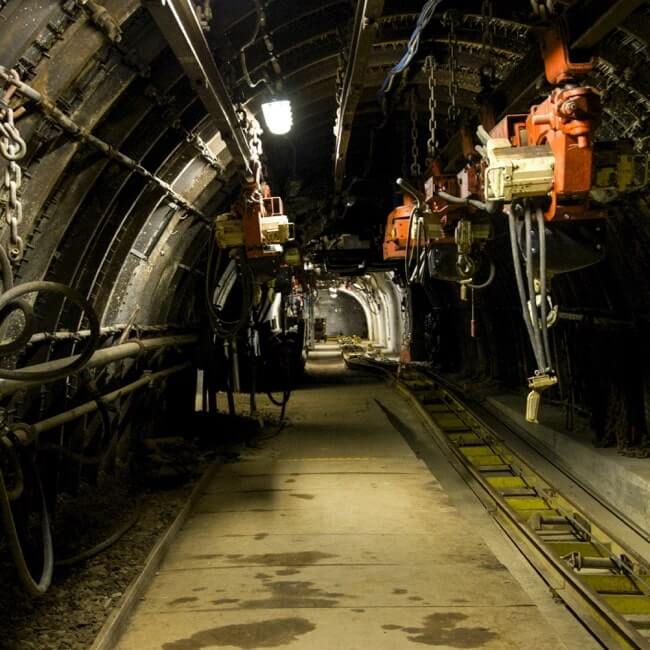Lavras Gold drills 340 metres grading 1.09 g/t gold at Fazenda do Posto discovery
Hole 23FP002 includes 160 metres at 1.79 g/t gold including 68 metres at 2.09 g/t gold
- Long, continuous bulk tonnage style of gold mineralization in intrusive-hosted gold system
- Hole drilled at new Fazenda do Posto target, located 150 metres west of Butiá Gold Deposit
- Blind gold discovery with no surface expression of mineralization opens up new exploration potential
- Two drill rigs now in area following up
TORONTO, Aug. 29, 2023 (GLOBE NEWSWIRE) -- Good, old-fashioned boots on the ground field exploration has yielded a potentially game-changing discovery for Lavras Gold Corp. (TSXV: LGC, OTCQB: LGCFF). Drilling at the new Fazenda do Posto discovery on the Company’s LDS Project in southern Brazil has returned assay results with remarkably continuous mineralization of 340 metres grading 1.09 g/t gold from 117 metres including:
- 160 metres grading 1.79 g/t gold from 199 metres including
- 27 metres grading 2.07 g/t gold from 208 metres
- 68 metres grading 2.09 g/t gold from 293 metres.
Drill hole 23FP002 was collared roughly 150 metres west of the Butiá Gold Deposit, which has an NI 43-101 gold resource (see details below) of approximately 500,000 ounces.
The hole tested a blind target with no obvious signs of surface mineralization in an area of recessive topography across an interpreted northeast trending fault. The hole was drilled north on a 020 degree azimuth and a dip of 060 degrees.
“This new discovery on our Fazenda do Posto claim block is a potential game changer for Lavras Gold,” said Michael Durose, Lavras Gold’s President and CEO. “It is remarkable that we have discovered a long, continuous bulk-tonnage disseminated style of gold mineralization in this intrusive-hosted gold system only 150 metres from the western edge of the Butiá Gold Deposit.
“This is a blind gold discovery associated with an interpreted down-dropped block of rock across a northeast trending fault. The discovery was made by good old-fashioned field geology with boots on the ground.
“Congratulations to our entire team in Brazil for this excellent outcome. We have two drill rigs in this target area and will vigorously follow up with the goal of fast-tracking the process of defining the geometry and grade distribution of this important new discovery.”
Learn more about these exploration results during a webinar August 30
Join CEO Michael Durose for an exploration webinar on August 30, 2023 at 11:00 am ET. Click here to register now.
Discussion of drilling results
The Fazenda do Posto discovery is located along the western edge of the Lavras do Sul intrusive complex approximately 4.7 kilometres southwest of the town of Lavras do Sul (Figure 1). Drill hole 23FP002 was collared about 150 metres west of the Butiá Gold Deposit (Figure 2) in an area of recessive topography.
A BLIND DISCOVERY
There is no obvious surface expression of this gold discovery. A surface gold-in-soil anomaly occurs immediately to the east of Fazenda do Posto and is associated with the Butiá Gold Deposit (see Figure 3).
Butiá hosts an NI 43-101 compliant near-surface gold resource of about 500,000 ounces, as detailed in the NI 43-101 Technical Report Mineral Resource for Butiá Gold Prospect dated and effective January 25, 2022. The report was prepared by VMG Consultoria e Soluções Ltda. for Lavras Gold Corp. and is available on the Company’s website and www.sedar.com under Lavras Gold’s issuer profile.
The area where drill hole 23FP002 was collared was previously interpreted to be outside of the favourable rocks hosting the Lavras do Sul gold deposits in the Fazenda do Posto granodiorites.
However, a reinterpretation of the previous drill hole information from the Butiá Gold Deposit, combined with field observations that the area west of Butiá was associated with recessive topography, and possibly related to a zone of hydrothermal alteration that was causing this recessive feature was the reason to test this target.
Further interpretation suggested that there was a northeast trending fault, and that it was possibly related to major crustal-scale structures known in the district. This interpretation was reaffirmed by a drone aeromagenetic survey that Lavras Gold completed in the area.
Drill hole 23FP002 was collared with an azimuth of north 020 and an inclined angle of 060 degrees. A cross section looking west at 23FP002 is shown in Figure 4. The hole encountered 114 metres of overlying cover rock interpreted to be the Fazenda do Posto granodiorite. The bottom of this granodiorite appears to be silicified or albitized. This alteration has almost completely replaced the original quartz and feldspar minerals in the granodiorite (see Figure 5). There is virtually no gold detected in this rock which may be acting as a cap and thereby masking any gold anomalism at surface. The hole then enters a long continuous interval of gold-mineralized red-brick coloured episyenite from 114 metres to 431 metres (Figure 6), with smaller intervals of moderately mineralized perthitic granite. This is followed by mineralized perthitic granite from 431 metres to 453 metres, and then unmineralized perthitic granite to the bottom of the hole at 465 metres.
The highlights of drill hole 23FP002 gold assay results are 340 metres grading 1.09 g/t gold from 117 metres including:
- 160 metres grading 1.79 g/t gold from 199 metres including
- 27 metres grading 2.07 g/t gold from 208 metres
- 68 metres grading 2.09 g/t gold from 293 metres.
The gold mineralization is hosted in a brick-red coloured hydrothermally altered intrusive rock called “episyenite,” which consists of approximately 95% potassium feldspar, 1-3% black iron-rich chlorite, 1-2% millimetre-scale grey-white carbonate vesicles, and 1-3% very fine-grained to fine grained disseminated and framboidal pyrite and arsenian pyrite.
These disseminated sulphides are intimately associated with black clots of iron-rich chlorite that occurs in the matrix to the feldspar minerals.
Significantly, there is no visible quartz in the episyenite, as the rocks are silica undersaturated and the alteration is interpreted to be of alkaline affinity.
Locally, larger cubic pyrite creates a framboidal texture. Occasional, cross-cutting millimetre tocentimetre scale sulphide veinlets result in higher grade gold values typically in the 4 to 6 g/t range (see Figures 7 and 8).
While the entire 340 metre interval is gold mineralized, it is very significant that there are long intervals of bulk-tonnage style higher-grade gold above 2 g/t as highlighted above. These higher-grade intervals suggest the hole may be tracking toward a feeder structure although further drilling is required to confirm this. This new gold discovery is open in all directions.
There are several zones of typically 8 to 10 metres of less than 0.20 g/t material usually associated with intervals of perthitic granite. When these low-grade zones are removed from the analysis, we estimate that the mineralized rock has an average gold grade of 1.35 g/t over 269 metres.
Table 1 tabulates the assay results for the mineralized interval of drill hole 23FP002. Sampling was completed on 1 metre intervals for the entire length of the drill hole. Three 50 gram aliquots were assayed for each 1 metre sample, and the average grade of the three aliquots was used to derive the final gold grade.
Next steps at Fazenda do Posto and Butiá
Indications are that a significant gold mineral system is developing at the Fazenda do Posto gold discovery and the adjacent Butiá Gold Deposit.
Two drill rigs are on site testing these areas.
The near-term objective is to define the geometry and gold grade distribution of the Fazenda do Posto discovery and possibly look for more blind discoveries. The second objective is to test for extensions to the mineralized footprint of the Butiá Gold Deposit.
It is noteworthy that the alteration system and gold-in-soil anomaly at Butiá extends for more than 3 kilometres in a southeast-northwest direction, and for greater than 2 kilometres to the north towards the Galvao and Zeca Souza discoveries (Figure 3). It is also noteworthy that Fazenda do Posto has a higher-grade core of mineralization that could materially enhance the overall economics of a potential mining project.
The medium-term goal is to de-risk the Fazenda do Posto discovery and Butiá Gold Deposit such that a preliminary economic study defining the general scope of a gold mining project can be prepared.
OVERALL LDS EXPLORATION PROGRAM MARKED BY EXCEPTIONAL SUCCESS
In addition to these positive developments, Lavras Gold has had exceptional exploration success since going public in April 2022. The Caneleira Gold Discovery has been reinterpreted, and new gold mineral systems have been found at Zeca Souza, Galvao, Matilde, Matilde Extension, and Vila Marieta. Although Butiá and Fazendo do Posto are developing into the centre of gravity at LDS, the exploration upside on the property is very significant.
Qualified person
Michael Durose, Lavras Gold’s President and CEO, is a qualified person as defined by NI 43-101. He has reviewed and approved the scientific and technical information contained in this release.
Quality assurance and quality control
For the Fazenda do Posto discovery, sample handling, preparation, and analysis are monitored through the implementation of formal chain-of-custody procedures and quality assurance/quality control programs designed to follow industry best practices.
All drill hole samples in this drilling program consist of split NQ diamond drill core.
Drill core is logged and sampled in a secure facility located in Lavras do Sul, Rio Grande do Sul State, Brazil. Drill core samples for gold assay are cut in half using a diamond saw and submitted to ALS Laboratories Inc. in Goiania, Goiás State, Brazil for preparation by crushing to 85% passing 1.0 mm, riffle splitting to obtain 500 g aliquots, and pulverizing to 85% passing 75 microns.
Pulps are shipped to ALS Laboratories Inc. in Lima, Peru and analyzed by a 50 g fire assay and AAS finish. Three 50 g aliquots are taken for samples in the mineralized zone and one aliquot is taken in fresh rocks. The average grade of the three aliquots is used to determine the final grade of the mineralized sample.
Certified standards, non-certified blanks and field duplicates are inserted into the sample stream at regular intervals, so that QA/QC accounted for about 10% of the total samples. Results are routinely evaluated for accuracy, precision, and contamination.
Lavras Gold has been targeting larger intersections of greater than 0.25 g/t gold. Intersections that are lower than this threshold may provide exploration insight and may therefore be disclosed.
About Lavras Gold
Lavras Gold Corp. (TSXV: LGC, OTCQB: LGCFF) is a Canadian exploration company focused on realizing the potential of a multi-million-ounce gold district in southern Brazil. Its Lavras do Sul Project is located in Rio Grande do Sul State, and is primarily an intrusive hosted gold system of possible alkaline affinity. More than 23 gold prospects centred on historic gold workings have been identified on the property, which spans more than 22,000 hectares. Follow Lavras Gold on www.lavrasgold.com, as well as on LinkedIn, Twitter, and YouTube.
Contact information
Michael Durose, President & CEO, or Annemarie Brissenden, Investor Relations
+1-416-844-6284 | investor@lavrasgold.com
DISCLAIMER AND FORWARD-LOOKING INFORMATION
Neither the TSX Venture Exchange nor its Regulation Services Provider (as defined in the policies of the TSX Venture Exchange) accepts responsibility for the adequacy or accuracy of the content of this news release.
This news release contains certain “forward-looking information” within the meaning of applicable securities laws. Forward-looking information is frequently characterized by words such as “plan”, “expect”, “project”, “intend”, “believe”, “anticipate”, “estimate”, “may”, “will”, “would”, “potential”, “proposed” and other similar words, or statements that certain events or conditions “may” or “will” occur. These statements, including those on planned exploration activities and goals, are only objectives and predictions. Forward-looking information is based on the opinions and estimates of management at the date the information is provided, and is subject to a variety of risks and uncertainties and other factors that could cause actual events or results to differ materially from those projected in the forward-looking information, including the risks and factors that generally affect exploration and the uncertainty of exploration results. For a description of the risks and uncertainties facing the Company and its business, refer to the Company’s Management’s Discussion and Analysis recently filed under the Company’s profile on www.sedar.com. The Company undertakes no obligation to update forward-looking information if circumstances or management’s estimates or opinions should change, unless required by law. The reader is cautioned not to place undue reliance on forward-looking information.
Subscribe to the leading business intelligence platform in Latin America with different tools for Providers, Contractors, Operators, Government, Legal, Financial and Insurance industries.
News in: Mining & Metals (Brazil)

Vale strengthens ties with govt with US$12bn investment in Pará iron ore, copper ops
The investments will be focused on the company's Carajás operations.

Junior exploration roundup: Hot Chili, Kootenay, Silver Tiger and more
Companies operating in Chile, Mexico, Guyana, Colombia, Brazil and Peru provide updates.
Subscribe to Latin America’s most trusted business intelligence platform.
Other projects in: Mining & Metals (Brazil)
Get critical information about thousands of Mining & Metals projects in Latin America: what stages they're in, capex, related companies, contacts and more.
- Project: Colina (ex-Salinas Lithium Project)
- Current stage:

- Updated:
1 month ago
- Project: Salobo IV
- Current stage:

- Updated:
1 month ago
- Project: Neves
- Current stage:

- Updated:
1 month ago
- Project: Tiros
- Current stage:

- Updated:
1 month ago
- Project: Baixa Grande (ex-Salinas) (Lithium Ionic)
- Current stage:

- Updated:
1 month ago
- Project: Luanga
- Current stage:

- Updated:
1 month ago
- Project: Tocantinzinho
- Current stage:

- Updated:
1 month ago
- Project: Jauru (Mirassol D'Oeste)
- Current stage:

- Updated:
1 month ago
- Project: Liberdade
- Current stage:

- Updated:
1 month ago
- Project: Salobo III
- Current stage:

- Updated:
1 month ago
Other companies in: Mining & Metals (Brazil)
Get critical information about thousands of Mining & Metals companies in Latin America: their projects, contacts, shareholders, related news and more.
- Company: Ministério de Minas e Energia da República Federativa do Brasil (MME Brasil)
-
Brazil's Mining and Energy Ministry, MME, is composed of four departments: the Oil, Natural Gas, and Biofuels Secretariat; Geology, Mining and Mineral Transformation Secretariat...
- Company: ASX Mineração
- Company: Nexa Resources S.A. (Nexa)
-
Large-scale integrated zinc producer Nexa Resources S.A. (Nexa) is a Brazilian metal mining company, formerly known as Votorantim Metals. The company is part of the local Votora...
- Company: MSM TOPAZ Engenharia e Projetos
-
The description contained in this profile was taken directly from an official source and has not been edited or modified by BNamericas researchers, but may have been automatical...
- Company: MIP Engenharia S.A. (MIP Engenharia)
- Company: Companhia Brasileira de Alumínio (CBA)
-
Companhia Brasileira de Alumínio (CBA), born in 1941 and headquartered in São Paulo, is a Brazilian aluminum producer part of the local conglomerate Votorantim. CBA mines and sm...
- Company: Alcoa Alumínio S.A. (ALCOA Aluminio Brasil)
-
Alcoa Alumínio, the Brazilian subsidiary of US aluminum giant Alcoa, produces primary aluminum, fabricated aluminum, and alumina. In addition to aluminum products and components...
- Company: Forship Engenharia (Forship Engenharia S.A)
-
Forship provides engineering solutions and services for industrial plants in the oil and gas, petrochemical, shipbuilding, electric power and mining industries, among others. Th...



